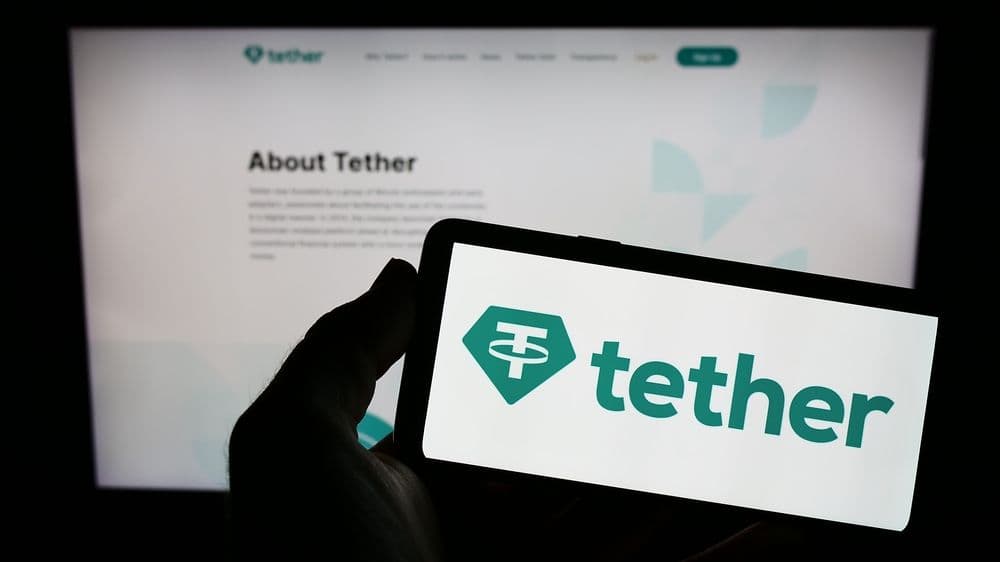The world's largest stablecoin issuer has systematically deployed approximately $5 billion across American businesses and government securities over the past 24 months, representing a significant strategic pivot toward deeper US market integration.
Tether Operations Limited, which manages the $153 billion USDT stablecoin ecosystem, has diversified its revenue streams through calculated investments spanning technology startups, cryptocurrency mining operations, and substantial Treasury bill holdings.
Tether's investment portfolio reveals a concentrated focus on emerging technology sectors with potential for substantial growth. The company's $775 million investment in Rumble, a video-sharing platform, resulted in the acquisition of over 103 million Class A shares, establishing a significant ownership position in the alternative social media space.
Additionally, through its venture capital arm Tether Evo, the company committed $200 million to BlackRock Neurotech during 2024, securing majority control of the brain-computer interface startup. This investment represents Tether's entry into the nascent neurotechnology sector, which industry analysts project could reach $24.2 billion globally by 2030.
These technology investments demonstrate a strategic approach to portfolio diversification beyond traditional cryptocurrency operations. The selections target platforms and technologies that align with decentralized communication and advanced computing interfaces, sectors experiencing increased regulatory scrutiny and market demand.
Bitcoin Mining Infrastructure Expansion
Tether has systematically increased its exposure to Bitcoin mining operations across the United States, reflecting both strategic positioning and operational integration. The company has elevated its stake in Bitdeer Technologies Group to 21%, making it among the largest shareholders in the NASDAQ-listed mining operation.
Beyond equity investments, Tether has directed hash power toward the OCEAN mining pool, creating operational synergies between its stablecoin reserves and Bitcoin mining infrastructure. This vertical integration strategy provides multiple revenue streams while maintaining direct exposure to Bitcoin network operations.
The mining investments occur amid increased institutional adoption of Bitcoin and growing concerns about network security and decentralization. By supporting US-based mining operations, Tether positions itself within the domestic cryptocurrency infrastructure while potentially benefiting from any regulatory advantages afforded to compliant mining operations.
Tether's Treasury bill holdings have reached $120 billion, positioning the company as the 19th-largest holder of US government debt globally. This allocation surpasses the sovereign holdings of Germany ($111 billion) and the United Arab Emirates ($104 billion), highlighting the scale of Tether's US financial market integration.
These Treasury securities serve as primary backing for USDT tokens in circulation, creating a direct relationship between US government debt markets and global stablecoin liquidity. The holdings provide stability to USDT's dollar peg while generating consistent returns through Treasury yields.
The substantial Treasury position also creates potential systemic importance for Tether within US financial markets. Any significant redemption of USDT could theoretically impact Treasury market liquidity, though the company's redemption patterns have historically remained stable.
New Product Development
Tether's investment strategy appears designed to demonstrate US market commitment ahead of anticipated federal stablecoin regulations. CEO Paolo Ardoino has indicated plans to launch a new dollar-backed stablecoin specifically designed for US market compliance once federal frameworks are established.
This planned product would operate alongside USDT, which maintains dominant market share in developing nations but faces increasing regulatory challenges in developed markets. USDT currently represents approximately 60% of the global stablecoin supply, with $153 billion in circulation, but has experienced exchange delistings in Europe due to MiCA (Markets in Crypto-Assets) regulation compliance concerns.
The new stablecoin would potentially address regulatory requirements while maintaining Tether's market leadership position. This dual-product strategy allows the company to serve different regulatory environments without abandoning existing market share.
Despite significant US market investments, Tether continues facing scrutiny regarding reserve transparency and USDT usage in illicit activities. Regulatory authorities and industry observers have called for enhanced disclosure of reserve compositions and more detailed auditing procedures.
The company maintains that it cooperates fully with law enforcement agencies when addressing criminal usage of USDT. However, the pseudonymous nature of cryptocurrency transactions and USDT's widespread adoption in developing markets create ongoing compliance challenges.
These transparency concerns could impact Tether's ability to launch new products in highly regulated markets like the United States. The company's investment strategy may partially address these concerns by demonstrating long-term commitment to US market participation and regulatory compliance.
Strategic Positioning
Tether's $5 billion investment deployment represents more than capital allocation - it establishes operational and strategic ties to the US economy that could influence regulatory treatment and market access. The investments create stakeholder relationships across multiple sectors while generating diversified revenue streams beyond transaction fees.
The strategy also positions Tether to benefit from potential US cryptocurrency market growth and regulatory clarity. By establishing significant US market exposure through investments rather than just Treasury holdings, the company creates multiple pathways for continued operation under various regulatory scenarios.
However, this concentration in US markets also creates new risk exposures. Economic downturns, regulatory changes, or market volatility could impact investment values and overall company performance. The strategy requires careful balance between diversification benefits and concentration risks.
Final thoughts
Tether's investment approach occurs amid increasing institutional adoption of cryptocurrency and growing regulatory attention to stablecoin operations. Major financial institutions and corporations have begun integrating cryptocurrency services, creating potential partnership opportunities for established stablecoin issuers.
The company's dual-market strategy - maintaining USDT for global markets while developing US-compliant products - reflects industry trends toward regulatory segmentation. This approach allows continued service to existing users while positioning for growth in regulated markets.
As federal stablecoin regulations develop, Tether's US market investments and planned product launches could provide competitive advantages in securing regulatory approval and market access. The company's Treasury holdings and business investments demonstrate economic integration that regulators may view favorably compared to offshore-focused competitors.
The effectiveness of this strategy will ultimately depend on regulatory developments, market conditions, and the company's ability to maintain operational stability while managing increased complexity across multiple business lines and jurisdictions.

